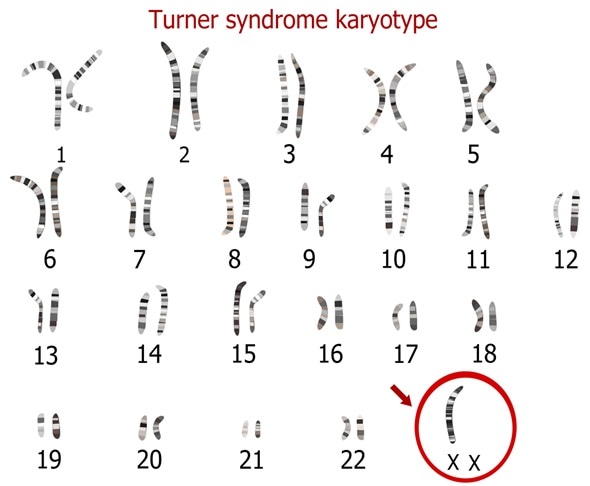For The Latest Medical News, Health News, Research News, COVID-19 News, Pharma News, Glaucoma News, Diabetes News, Herb News, Phytochemical News, Thailand Cannabis News, Cancer News, Doctor News, Thailand Hospital News, Oral Cancer News, Thailand Doctors
Turner syndrome is a health condition that affects females and involves the partial or complete absence of an X chromosome. There are various signs and symptoms of Turner syndrome that can present as a result of the missing sex chromosome.
Some of these may be evident before birth and during childhood years, but the diagnosis is sometimes delayed until adulthood, particularly for patients with milder symptoms.

There may be some signs of Turner syndrome in the prenatal ultrasound, before the baby is born. These signs may include abnormal structure or function of the heart and kidneys, or a collection of fluid on the back of the neck or other areas of the body.
There are several physical features that may be evident in early years of life such as:
Infants are more likely to have lymphedema (swollen hands and feet) and be under average height at birth.
The first three years of life for a girl with Turner syndrome are relatively normal, but the growth may slow down after this point.
Although intelligence is usually considered to be normal, they may have learning disabilities in spatial concepts and mathematics. It is also common to have difficulty interacting with others and understanding emotions in social situations.
Girls with Turner syndrome also typically go through a phase of physical activity, restlessness, impulsive actions with no sense of danger, and a short attention span. Hyperactivity usually begins at a young age but becomes more problematic in a school setting when the girl may have difficulty settling in class. These symptoms tend to subside in the adolescence years.
At the age of puberty (8-14 years), an affected girl will not have the normal growth spurt, and is usually of short stature, with respect to her parents, for this reason.
The majority of girls with Turner syndrome have insufficient sex hormone production in their ovaries, which affect the sexual changes that usually occur at the age of puberty. This can lead to
Approximately 1 in 10 girls with Turner syndrome naturally experience some physical changes usually expected at the age of puberty without treatment.
Women with Turner syndrome have a short stature, approximately 20 cm less than expected for the individual, according to the height of her parents. This difference can often be reduced by about 5 cm with hormonal treatment at the age of puberty.
Although the ovaries and production of sex hormones are greatly altered in women with Turner syndrome, the structure and development of the vagina is normal. This allows them to engage in sexual activities if desired, although they are usually infertile and unable to conceive a child without treatment.
Women with Turner syndrome are more likely to be affected by some other health conditions such as: